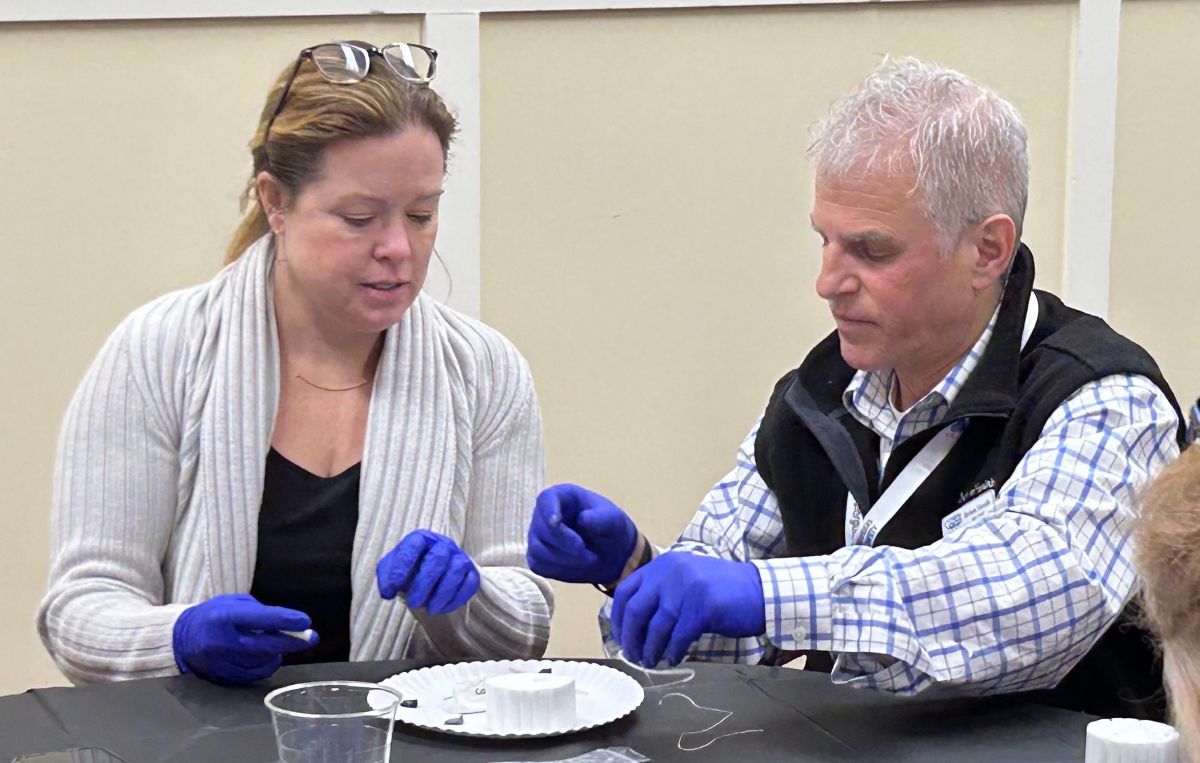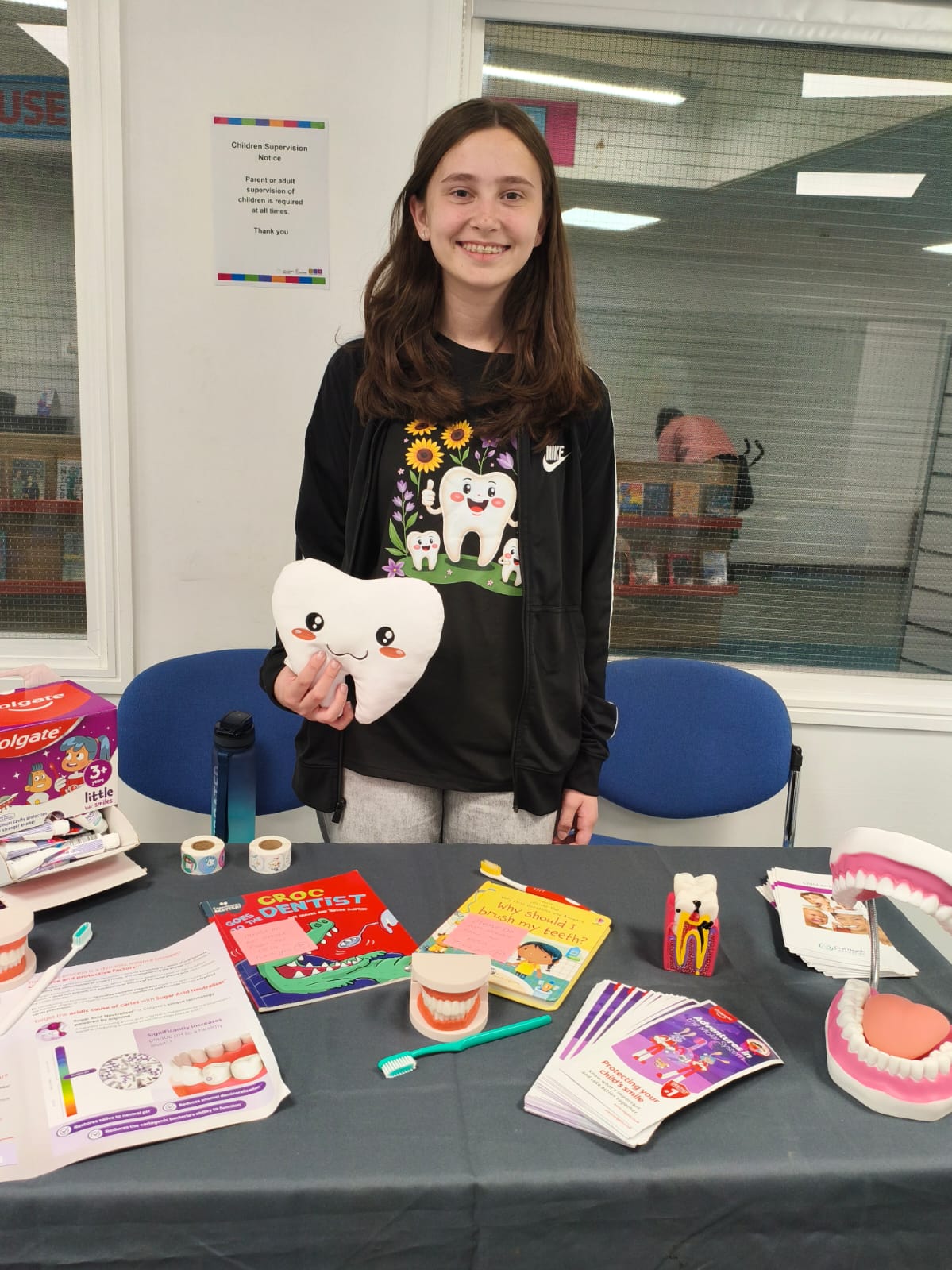Maine is grappling with such a shortage of dentists that some doctors are adapting to treat early tooth decay themselves.
Most children in Maine don’t get an annual checkup and cleaning from a dentist. Even having dental insurance doesn’t guarantee access: Only a third of children with any type of insurance get both a check up and a cleaning each year, according to a study last year from the University of Southern Maine Muskie School of Public Service and Catherine E. Cutler Institute.
The most commonly proposed solutions are to train more dentists and increase MaineCare rates to make it more affordable for dentists to accept lower-income patients, said Becca Matusovich, executive director of the Children’s Oral Health Network of Maine.
Indeed, the ranks of dentists are declining, from 590 in 2019 to 530 in 2023. The Children’s Oral Health Network of Maine is an advocacy coalition focused on improving prevention, education and treatment tools for children’s oral health.
However, Matusovich said potential solutions shouldn’t be limited to adding more dentists and increasing reimbursement.
“We are so far from the scale we need that just training more dentists won’t get us where we need to be,” she said.
In response, her organization is working to expand access to oral health treatment beyond the dentist’s office. These early intervention options can stop cavities from getting worse and help alleviate the backlog for dentists, leaving them to focus on more advanced treatment, Matusovich said.
One example is a treatment called silver diamine fluoride, which more pediatricians in Maine have started using in recent months as training programs have ramped up. Dentists have used the treatment much longer.
The World Health Organization in 2021 added the treatment to its Model List of Essential Medicines, and the American Academy of Pediatrics has issued guidance on using it in the medical setting. The solution is a mixture of silver and fluoride.
Dr. Brian Youth, a pediatrician at MaineHealth and president of the Maine Chapter of the American Academy of Pediatrics, was one of the first in the state to incorporate silver diamine fluoride treatment into his primary care practice, first at the Pediatric Residency Clinic at Maine Medical Center and now also at MaineHealth Pediatrics in Westbrook.
Most pediatricians already offer fluoride varnish during well-child visits as a preventative measure, Youth said. Now, when he finds a cavity, he can offer silver diamine fluoride to essentially petrify the decay and kill the bacteria.
Youth said it’s a fairly easy process. First he dries the tooth. Then he uses an applicator that looks similar to a Q-tip to press the treatment to the decay for 30 to 60 seconds. He then follows up with the family at another appointment four to six weeks later to see if they need a second application and to check if they can see a dentist for further assessment.
“Pediatricians have so much on their plate that they need to cover with families at different visits, and some might see this as an additional task that pediatricians are taking on because patients can’t get the dental care that they need,” Youth said. “But I would say this is an important one because of the morbidity associated with dental [decay] in our patients.”
Cavities and tooth decay can cause infection, be painful for children and could make them less likely to attend school, Youth added.
Since he started offering silver diamine fluoride treatment last fall, Youth and his colleague Dr. Laura Blaisdell have treated more than 70 patients at the Pediatric Residency Clinic at Maine Medical Center. They have also taught pediatric residents in training on the application of silver diamine fluoride.
Matusovich, with the Children’s Oral Health Network of Maine, said some potential downsides of the treatment can be that it can stain the teeth brown or black where the decay is addressed, and children with silver allergies should check with their doctor first. She added that it’s not recommended if the cavity is too far along.
More pediatricians could soon join Youth. In recent months, the Children’s Oral Health Network of Maine funded training events on silver diamine fluoride conducted by the primary care program From The First Tooth, including a recent one in Washington County. And a pilot program that wrapped up this summer trained six school nurses and one school-based health center in Maine to identify early signs of decay and apply silver diamine fluoride.
Silver diamine fluoride is one of many ongoing solutions, Matusovich said. Another program, piloted with Head Start, had a dental hygienist do cleanings and early interventions in the school setting, and then use telehealth visits for dentists to remotely review X-rays and other documents.
The pilot wrapped up last year, but Matusovich said the initial participants are continuing the program, and her organization received additional funds to expand into new communities.
And a bill introduced last session, L.D. 1746, would have required the Maine Department of Health and Human Services to develop a model for additional preventative oral health and disease interventions in schools and provide at least one mobile dental services provider in each public health district. It also would have required DHHS to train primary care providers on minimally invasive treatments for children.
That bill was carried over and will be considered in the upcoming session.
“Prevention is key for sure, but what these new tools and new strategies are giving us is also the ability to stop cavities very quickly,” Matusovich said. “There’s this step in between where now we have silver diamine fluoride and other minimally invasive care options that can be much more available outside of the dental office.”
Correction: This story has been updated to clarify that Dr. Brian Youth first started silver diamine treatment at Pediatric Residency Clinic at Maine Medical Center.
link






More Stories
Warwickshire teens lead “Tooth-tastic” Fun Palace to promote children’s dental health
Pediatric Dentistry Now Seeing Patients in Farmington
Warwickshire teens lead “Tooth-tastic” Fun Palace to promote children’s dental health